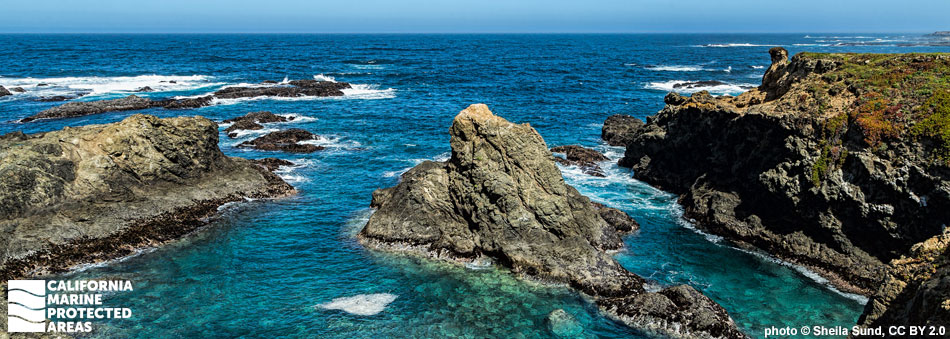
Overview
Point Cabrillo State Marine Reserve (SMR) is located off a rocky headland just south of Caspar, between the towns of Fort Bragg to the north and Mendocino to the south. The SMR covers almost half a square mile of ocean habitat. The reserve is a small expansion of an existing MPA at the same location and was incorporated into the statewide MPA network in 2012. The SMR is seaward of Point Cabrillo Light Station State Historic Park, where the Point Cabrillo Lighthouse was built in 1908. The sailing brig Frolic sank nearby in the mid-1800s after striking a reef.
The SMR is characterized by beaches, rocky shores, coves, headlands, sandy seafloor, rocky reefs, and kelp forests that support a diversity of marine life including sea urchins, sea cucumbers, anemones, abalone, surfperch, rockfish, halibut, crabs, and scallops.
Regulations
It is unlawful to injure, damage, take, or possess any living, geological, or cultural marine resource.
California Code of Regulations Title 14, Section 632(b)(23)(opens in new tab)
Quick Facts
MPA size: 0.44 square miles
Shoreline span: 1.3 miles
Depth range: 0 to 40 feet
Habitat composition*:
- Rock: 0.67 square miles
- Sand/mud: 0.13 square miles
*Habitat calculations are based on three-dimensional area and may exceed the total MPA area listed above.